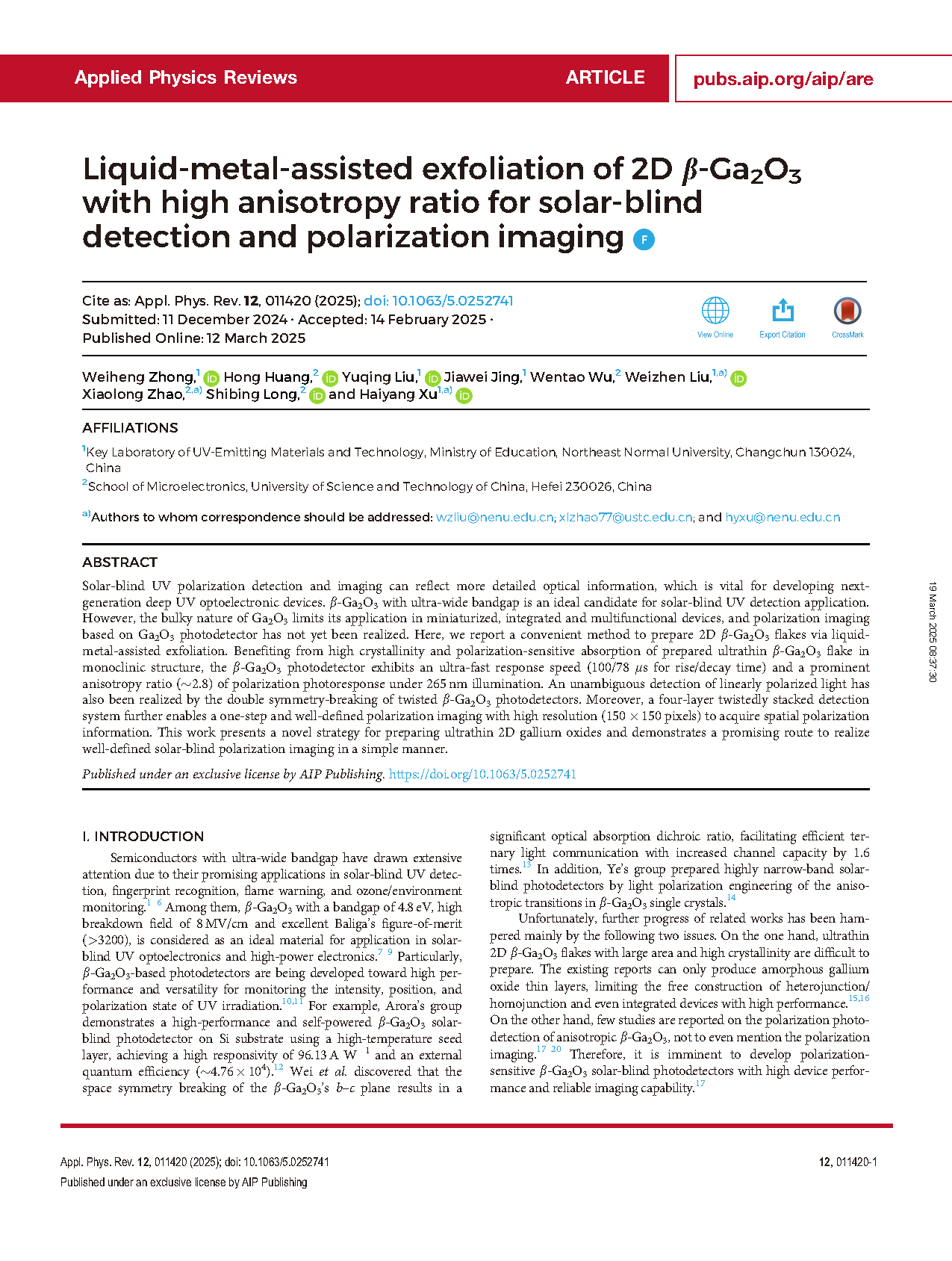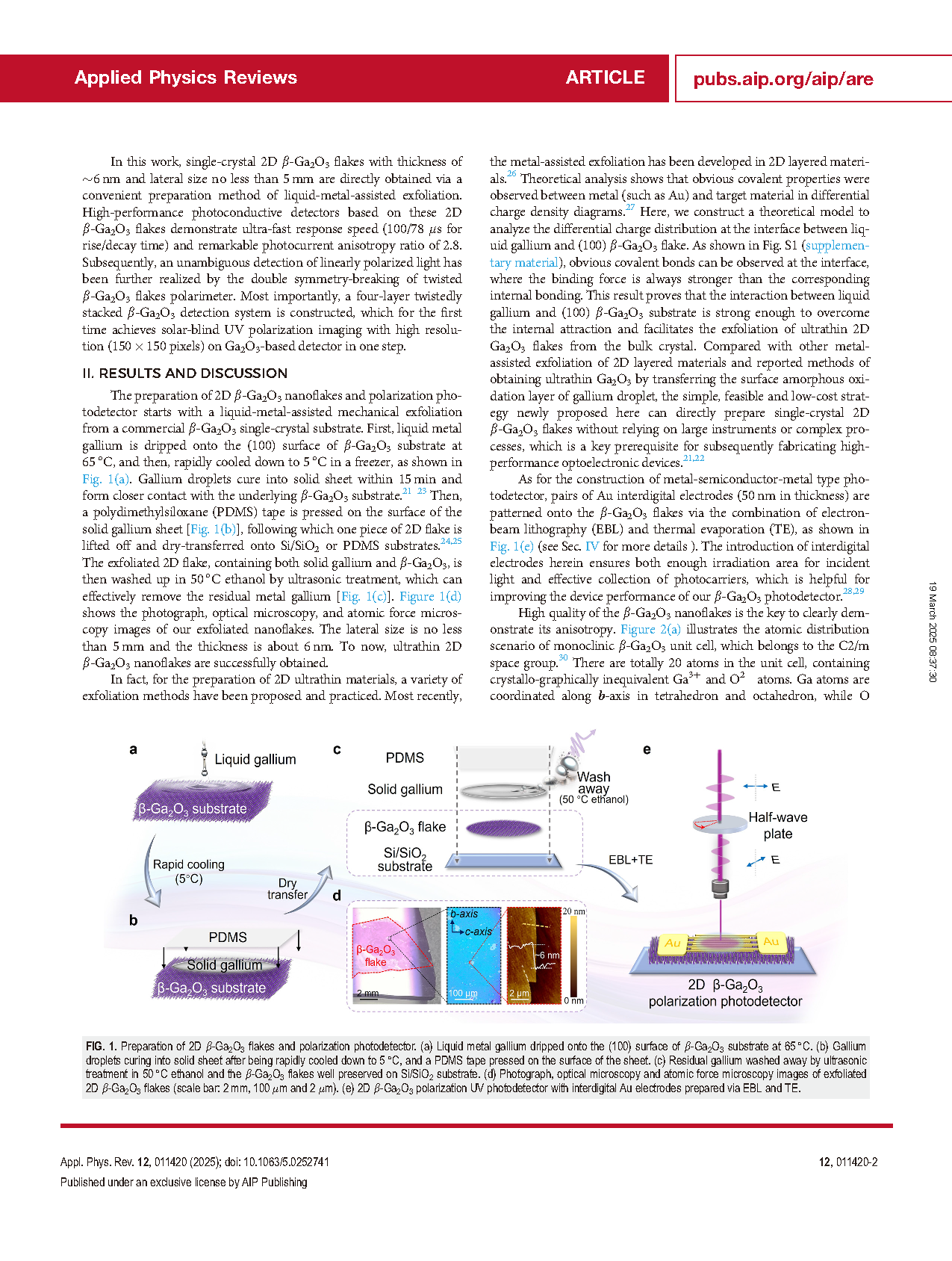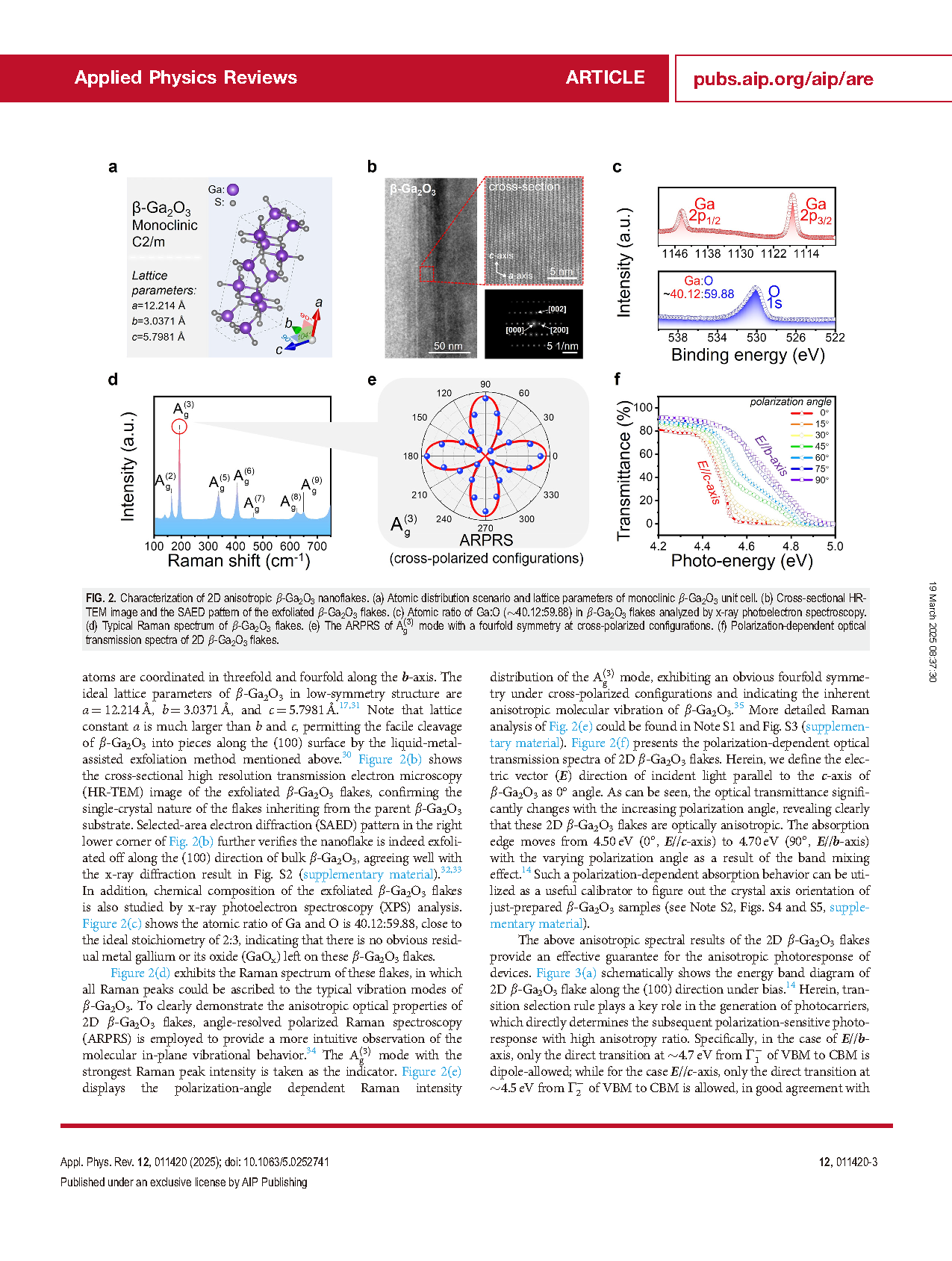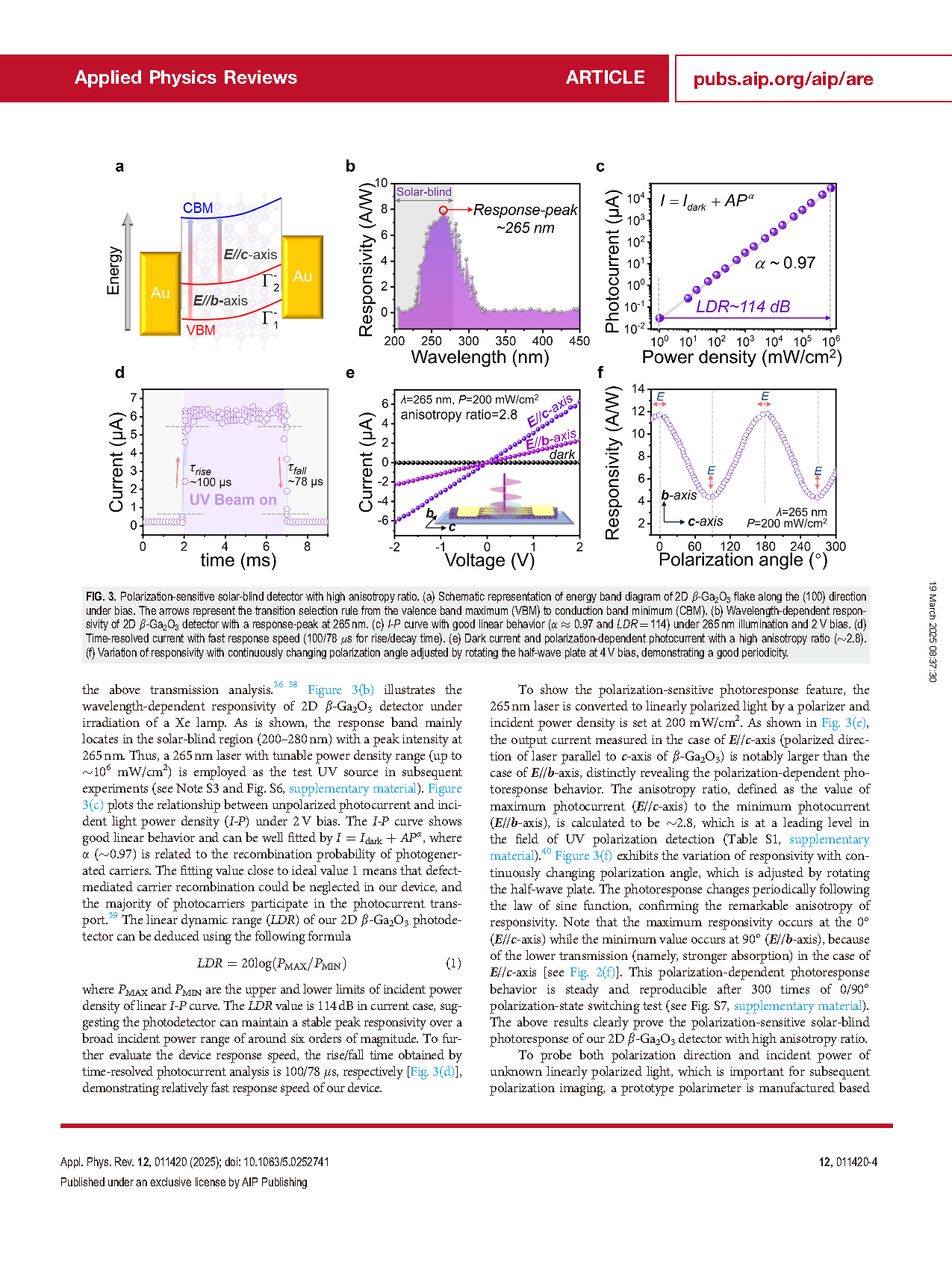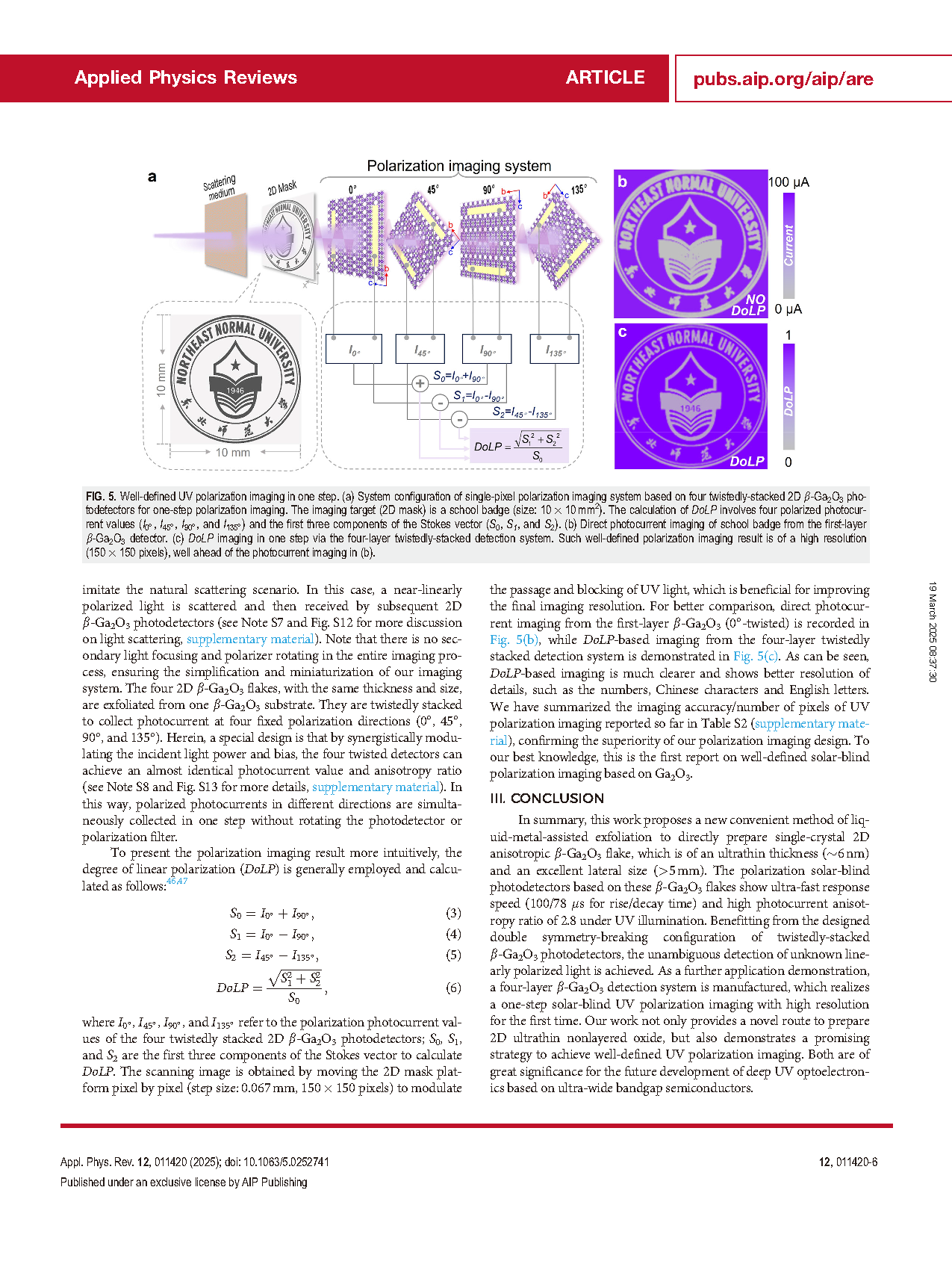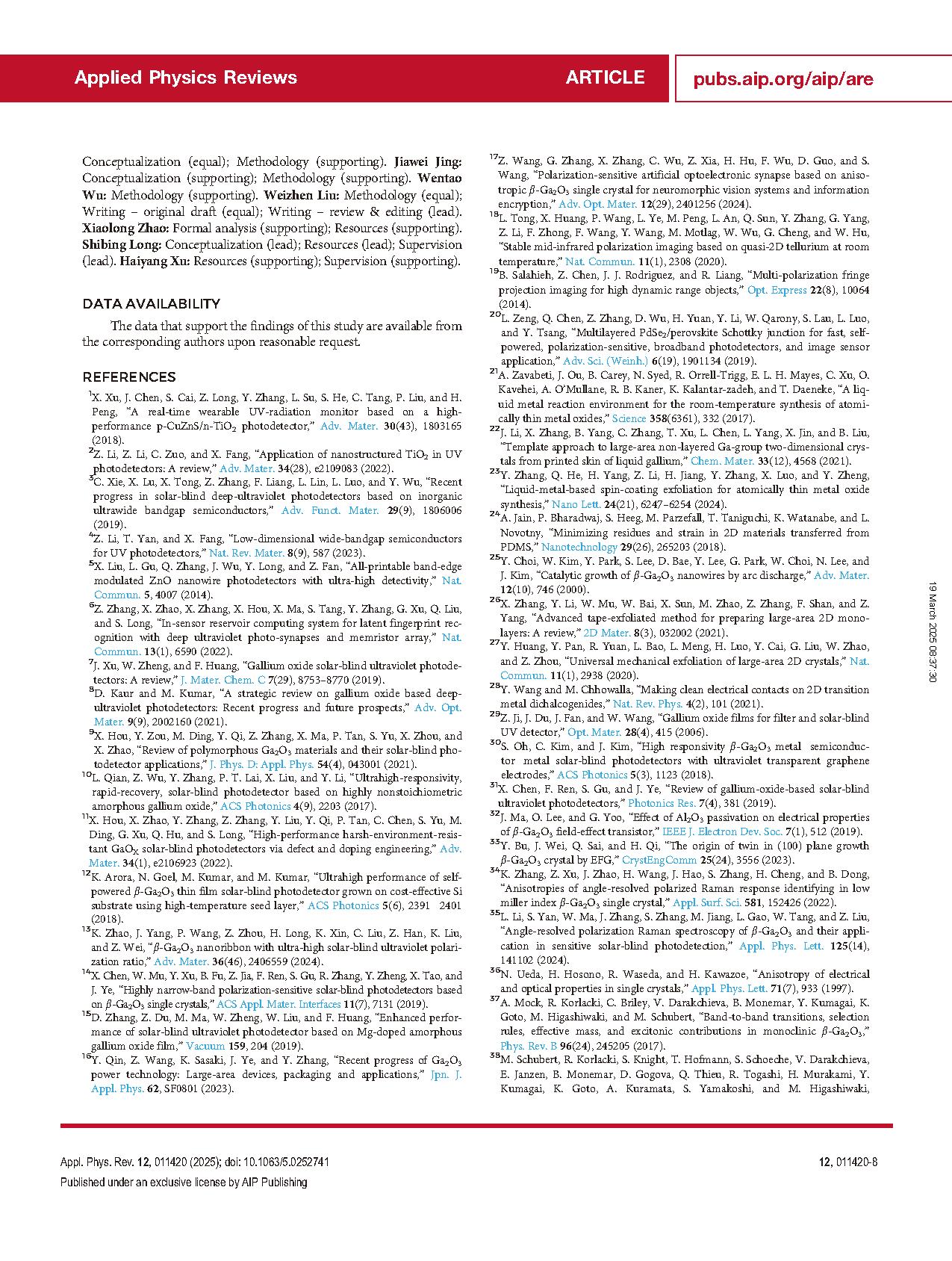
【Member Papers】 Northeast Normal University --- Liquid-metal-assisted exfoliation of 2D β-Ga₂O₃ with high anisotropy ratio for solar-blind detection and polarization imaging
日期:2025-03-25阅读:455
Researchers from the Northeast Normal University have published a dissertation titled "Liquid-metal-assisted exfoliation of 2D β-Ga2O3 with high anisotropy ratio for solar-blind detection and polarization imaging" in Applied Physics Reviews.
Project Support
This work is supported by the National Key R&D Program of China (No. 2023YFB3610200), National Natural Science Fund for Distinguished Young Scholars (No. 52025022), the Program of National Natural Science Foundation of China (Nos. 62275045 and 12074060), the Science and Technology Development Plan Project of Jilin Province (No. 20240601049RC), and the Funding support from University of Science and Technology of China (Nos. WK2100000025 and YD2100002009).
Background
Semiconductors with ultra-wide bandgap have drawn extensive attention due to their promising applications in solar-blind UV detection, fingerprint recognition, flame warning, and ozone/environment monitoring. Among them, β-Ga2O3 with a bandgap of 4.8 eV, high breakdown field of 8MV/cm and excellent Baliga’s figure-of-merit (>3200), is considered as an ideal material for application in solar-blind UV optoelectronics and high-power electronics. In this work, single-crystal 2D β-Ga2O3 flakes with thickness of 6 nm and lateral size no less than 5 mm are directly obtained via a convenient preparation method of liquid-metal-assisted exfoliation. For the first time achieves solar-blind UV polarization imaging with high resolution on Ga2O3-based detector in one step.
Abstract
Solar-blind UV polarization detection and imaging can reflect more detailed optical information, which is vital for developing next-generation deep UV optoelectronic devices. β-Ga2O3 with ultra-wide bandgap is an ideal candidate for solar-blind UV detection application. However, the bulky nature of Ga2O3 limits its application in miniaturized, integrated and multifunctional devices, and polarization imaging based on Ga2O3 photodetector has not yet been realized. Here, we report a convenient method to prepare 2D β-Ga2O3 flakes via liquid-metal-assisted exfoliation. Benefiting from high crystallinity and polarization-sensitive absorption of prepared ultrathin β-Ga2O3 flake in monoclinic structure, the β-Ga2O3 photodetector exhibits an ultra-fast response speed (100/78 μm for rise/decay time) and a prominent anisotropy ratio (~2.8) of polarization photoresponse under 265 nm illumination. An unambiguous detection of linearly polarized light has also been realized by the double symmetry-breaking of twisted β-Ga2O3 photodetectors. Moreover, a four-layer twistedly stacked detection system further enables a one-step and well-defined polarization imaging with high resolution (150 150 pixels) to acquire spatial polarization information. This work presents a novel strategy for preparing ultrathin 2D gallium oxides and demonstrates a promising route to realize well-defined solar-blind polarization imaging in a simple manner.
Conclusion
In summary, this work proposes a new convenient method of liquid-metal-assisted exfoliation to directly prepare single-crystal 2D anisotropic β-Ga2O3 flake, which is of an ultrathin thickness (6 nm) and an excellent lateral size (>5 mm). The polarization solar-blind photodetectors based on these β-Ga2O3 flakes show ultra-fast response speed (100/78 ls for rise/decay time) and high photocurrent anisotropy ratio of 2.8 under UV illumination. Benefitting from the designed double symmetry-breaking configuration of twistedly-stacked β-Ga2O3 photodetectors, the unambiguous detection of unknown linearly polarized light is achieved. As a further application demonstration, a four-layer β-Ga2O3 detection system is manufactured, which realizes a one-step solar-blind UV polarization imaging with high resolution for the first time. Our work not only provides a novel route to prepare 2D ultrathin nonlayered oxide, but also demonstrates a promising strategy to achieve well-defined UV polarization imaging. Both are of great significance for the future development of deep UV optoelectronics based on ultra-wide bandgap semiconductors.
Graphic Abstract

FIG. 1. Preparation of 2D β-Ga2O3 flakes and polarization photodetector. (a) Liquid metal gallium dripped onto the (100) surface of β-Ga2O3 substrate at 65 °C. (b) Gallium droplets curing into solid sheet after being rapidly cooled down to 5 °C, and a PDMS tape pressed on the surface of the sheet. (c) Residual gallium washed away by ultrasonic treatment in 50°C ethanol and the β-Ga2O3 flakes well preserved on Si/SiO2 substrate. (d) Photograph, optical microscopy and atomic force microscopy images of exfoliated 2D β-Ga2O3 flakes (scale bar: 2 mm, 100 μm and 2 μm). (e) 2D β-Ga2O3 polarization UV photodetector with interdigital Au electrodes prepared via EBL and TE.
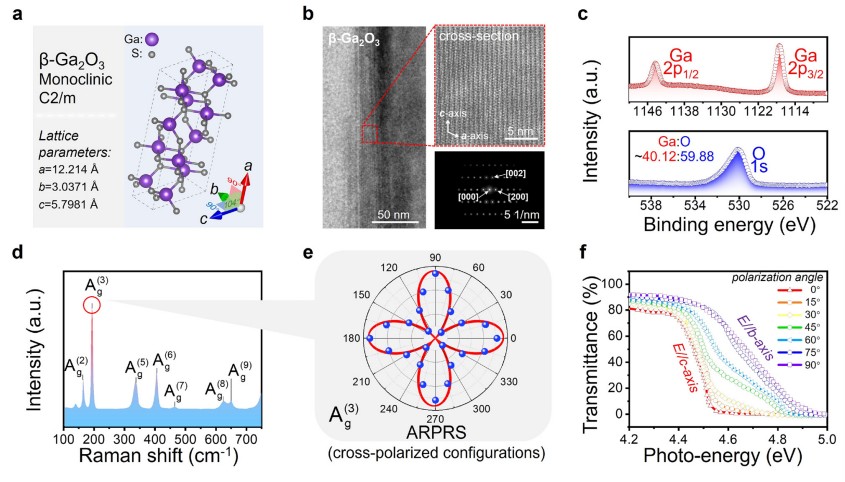
FIG. 2. Characterization of 2D anisotropic β-Ga2O3 nanoflakes. (a) Atomic distribution scenario and lattice parameters of monoclinic β-Ga2O3 unit cell. (b) Cross-sectional HRTEM image and the SAED pattern of the exfoliated β-Ga2O3 flakes. (c) Atomic ratio of Ga:O (~40.12:59.88) in β-Ga2O3 flakes analyzed by x-ray photoelectron spectroscopy. (d) Typical Raman spectrum of β-Ga2O3 flakes. (e) The ARPRS of Ag(3) mode with a fourfold symmetry at cross-polarized configurations. (f) Polarization-dependent optical transmission spectra of 2D β-Ga2O3 flakes.
DOI:
doi.org/10.1063/5.0252741
